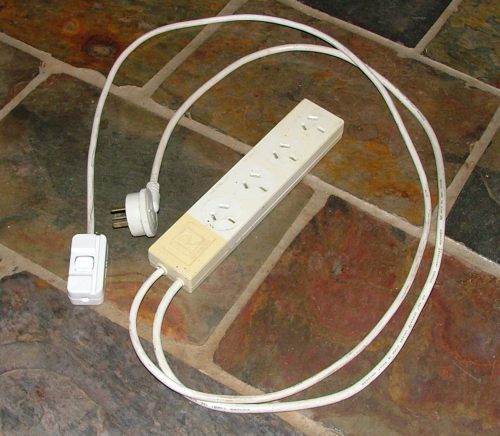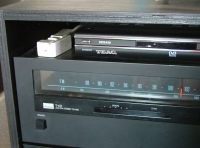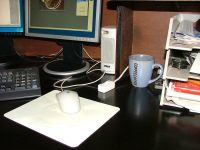 |
|
|
|
Site Navigation
Projects & Information
»General Information»Wind turbine Projects »The F&P Smartdrive »Electronic projects »Microcontroller projects »Miscellaneous Kits & Parts
»Basicly Natural Pty Ltd»PVC & Aluminium blades »Scale model farm windmills »Price Watch Discussion Forums
Handy Links
»Wind»Solar »Electric Vehicles »Electronics »Micro Controllers »General Interrest About TheBackShed Getting Started Privacy Policy
|
You can measure how much power a device is wasting by using a plug in Power Meter, this one is from Jaycar Electronics. This power meter will display power consumption in watt hours and dollars, and is cheap at less than $20. The other consideration is the fire risk. Electronic devices that run all day and night are going to fail eventually. Now usually when these devices fail they blow their little fuses and thats that. But sometime things can go bad, and the device can catch fire. Or a nearby electric storm can cause a power surge that could also start a fire in an appliance either turned on or in stanby mode. Just a side note, NEVER leave a TV, CTR Monitor, Cloths Dryer ( or anything with a heater ) on and go for a drive to the local shop. The number of fires caused by these devices when no one is around to pull the plug is staggering. Its just crazy, always turn these things off if no one is going to be there to smell the smoke before the fire. In my time as a appliance repair man I had to write up several insurance statements on how a TV or monitor started a fire, its scary stuff and can happen very quickly. If someone is near by, they hear the pops and smell the smoke before its too late, but if no one is around there is nothing to stop a major fire taking hold. Anyway, what can we do about this standby power problem. Well its easy, just flick the power off at the wall. Save yourself $100 a year, reduce the chances of fire destroying your home, and do some good for the environment. Not so easy, is it? The wall socket is down behind the refrigerator, under the desk or behind the TV. Lets face it, thats the only reason we dont turn these devices off. Well here are a couple of easy cheap solutions.
Power timers range in price from $5 for the basic 24hour timer shown here, to the more elaborate digital week timers for about $30. To use a timer on my TV/Entertainment center, I would work out when I watch TV, and adjust the timer to suit. Say, for example, I watch TV from 7pm to 10pm. I would set the timer to turn on power from 6pm to 12pm, an hour or two each way to allow for an early or late show. Any other time the timer has completely turned off the power ( except for it own tiny power requirement ), so I'm saving 18 hours per day of standby power! Same with my computer, I only use it for certain hours of the day, so I could set the timer to suit. A week timer would be better, to adjust for the extra hours on the weekends spent in front of the TV or computer. And knowing the power was turned off at midnight means I can sleep a little easier without the risk of fire. Mobile Phone chargers? Most phone charges only take a couple of hours to charge, so you could use a timer to kill the power after a few hours, again saving power for most of the day. Another option, a remote switch. Simply put the power switch in an easily accessible spot. So instead of crawling under the computer desk or behind the TV to turn off the power, just flick off a handy switch thats right there in front of you.
Rod will be releasing the eco-switch™ onto the market in the next few weeks, along with other energy saving devices he has been developing over the last year. Stay posted, I'll update this page as more information becomes available. For more information on the eco-switch™, visit their web site at http://www.eco-switch.com.au/ Now the eco-switch™ is is a great idea. I was inspired to make my own ( for my own use of course, the eco-switch™ is protected with patents, besides you have to be a qualified electrician to wire up this sort of thing ). What I've made are remote switch power boards. I modified a power board with a length of 240vac 4 core wire and a DPST mains switch to switch both A and N for safety.
So thats a couple of simple and cheap ways to cut back on your power bill, reduce the fire risk to your home, and do some good for the planet. If you can think of any other ways to cut back on standby power, please let me know and I'll add them to this page. |
||||||||
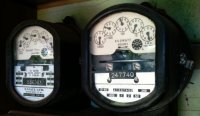
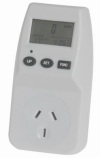 But how much power are we talking about here? According to
But how much power are we talking about here? According to  A timer.
A timer.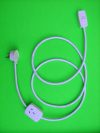 Now this brings me to the eco-switch™. In 2007 on the Australian show "New Inventors", Rod Sheppard introduced his "Eco-Switch" invention. The EcoSwitch is simply a remote switch for your appliances. Its a short extension lead that goes in between your wall socket and your appliances, with a switch on the end of a longer lead. The switch is put somewhere "handy", where you can easily access it.
Now this brings me to the eco-switch™. In 2007 on the Australian show "New Inventors", Rod Sheppard introduced his "Eco-Switch" invention. The EcoSwitch is simply a remote switch for your appliances. Its a short extension lead that goes in between your wall socket and your appliances, with a switch on the end of a longer lead. The switch is put somewhere "handy", where you can easily access it.